- Home
- The Creativity Group
- Reflection on 2018 JALT Conference and the Four Corners Tours in Japan: Kaihimakuhari – Hamamatsu - Fukui – Tottori
Reflection on 2018 JALT Conference and the Four Corners Tours in Japan: Kaihimakuhari – Hamamatsu - Fukui – Tottori
Dat Bao is a senior lecturer in Monash University. His expertise includes curriculum design, intercultural communication, materials development, literacy development, creative pedagogy and visual pedagogy in language education.
E-mail: dat.bao@monash.edu
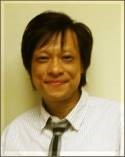
Dat Bao, The C Group
One day before the JALT Conference began, I took the opportunity to visit Chuo University in Tokyo where I observed an English lesson taught by a Japanese teacher. The class, which was year 10 in high school, was reviewing vocabulary by way of students chorally translating into English all the words shown in Japanese on the screen by the teacher. The words came with pictures so they look interesting to young learners. This activity demonstrated a tremendous level of memorising ability among the students. The only thing I did not have a chance to see would be how the students applied the words in their communication. Within an hour’s lesson, I was not able to witness how students’ verbal skills had been developed.
Leaving the class, I delivered a formal seminar to the Junior High School that operates under the supervision of Chuo university. My talk was about how the silent mode of learning means in the global world where many educators tend to favour verbal communication, with implication in the Japanese culture of learning. My participants were both teachers and students who showed particular interest in this topic.
During the discussion that followed my presentation, one Japanese student expressed concern about the tension in her mind as she often felt torn between the need to express herself and the apprehension that the teacher might not welcome her contribution. This share of thought became particularly provocative as for the first time, the teachers who were present at the seminar heard such an uncommon opinion from a student. Before that, many teachers had assumed that their students took silence for granted without desire to speak out during the lesson. Together, teachers and students were discussing ways to make the verbal option more available in the classroom. Although silence has been cherished as the norm, there was in the back of everyone’s mind a tendency to problematise such value as needing modification for a different learning impact. I feel that my talk left teachers and students with quite a bit to think about: how to make silence work productively and how to move away from silence if it does not assist learning.
A school visit in Tokyo
21 – 22 November 2018
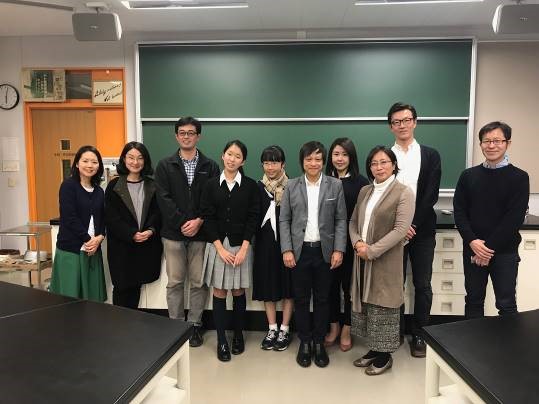
JALT Conference
23 – 26 November 2018
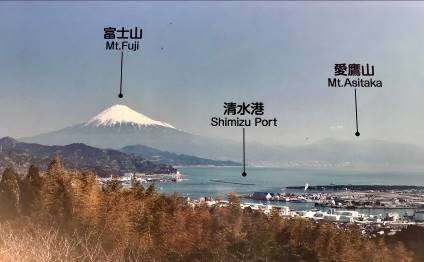
Overall, JALT was a great success, with over 1,550 attendees and a range of papers filled with rich pedagogical ideas. I was privileged to be invited as one of the featured presenters and my interaction with colleagues was a rich learning experience for me as much as for my audience. The conference chair, Louise Ohashi, and her team has performed a marvellous job in bringing educators together in such grand dimension.
From a cultural perspective, that struck me as another unique feature of the JALT Conference (later on, a similar feature applied to the Four Corners’ Tour) is that the event happens to represent the voice and professionalism of international scholars while Japanese educators tend to stay fairly quiet from academic debate and (in the words of a local colleague) hiding in their community. This makes me wonder about the national English Reform with regards to who makes decisions in curriculum policy and practice. Although I was visiting Japan with the initial intention of interacting with Japanese educators and learn from local practice, I was overwhelmed by the contribution of international educators. During my four days’ conference and four days’ tour, my interaction took place more with international scholars than with Japanese counterparts. Most of the educators who invited, welcome, and maintained correspondence with me were mainly Western expatriate lecturers. On the one hand, I felt warmly welcome and enjoyed tremendous hospitality from colleagues, which of course made my trip delightful. On the other hand, I struggled to witness the actual involvement of Japanese educators and to experience how Japanese scholars would engage with my presented ideas. Somehow, I wish I could hear more of what Japanese scholars really wants for English in this country.
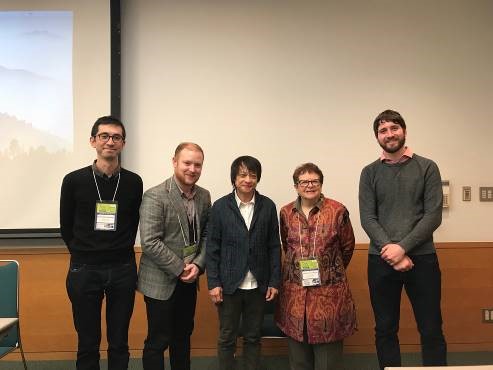
Kaihimakuhari, Chiba Prefecture
Tuesday 27 November 2018
Creative visuals for the English classroom
Kaihimakuhari was the first day of my tour, which came after the JALT Conference in Shizuoka. A Japanese colleague (I lost track of her name) met me at Kaihimakuhari station as I arrived here from Shizuoka City at 2.03pm and walked me to New Otani Hotel near the university. The next day, before my talk, Jennie Rothman, a senior lecturer from Kanda University kindly showed me around the campus. I was particularly impressed by the lovely, lavish learning space specifically designed for second language communication on campus. With a number of languages taught here (such as English, Spanish, Portuguese, Korean, Thai, Vietnamese, among others), the university invested remarkable effort in creating country-specific corners each of which represents one culture. For example, students can go to a Korean corner to view cultural artifacts, read Korean books, and conserve in Korean with peers with similar hobbies. The same thing applies to other languages and other cultures. To me this is a brilliant idea as it allows students to make the best use of these self-access places to improve their communication skills and network with other learners.
My talk the next day was about creative use of visuals at 7pm at the English Language Institute (ELI) where I briefly met with the Director, Dr Philip Murphy. During the discussion, apart from my input, participants had a chance to practise drawing human characters; develop a task based on the visual pedagogy that I have shared, which involves participants’ own drawings; and toy with the idea of implementing these strategies for feedback in the future. With pleasure, I also met a colleague from Kanda University of International Studies, Scott J. Shelton-Strong, who has published a review of my book, Understanding Silence and Reticence, in CELE Journal 26 (122-131) in April 2018.
The best idea I learned from this trip was teacher passion that was passed on to students in making the second language alive and active beyond the classroom with great autonomy. For this, students have the right facility available to them just within the same building that is smartly designed with cultural atmosphere and teacher consultants available within that small world. Lecturers and students believe that for language learning to succeed, spoon-feeding is not the way to go but every learner needs to make the effort in communication and it is here that they are learning to do so with enjoyment.
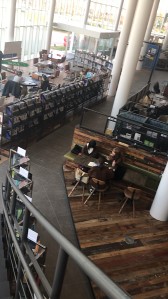
Hamamatsu, Shizuoka Prefecture
Wednesday 28 November 2018
Creative poetry for the classroom
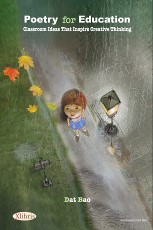
Hamamatsu is the cradle of legendary Yamaha instruments which started as early as 1900 when the first Japanese piano was ever produced. The history of musical instrument industry here was as inspiring as education. Torakusu Yamaha was an organ preparer who was asked to repair organs in elementary schools in the city. Based on this experience, Mr Yamaha observed and produced his own handmade organ. Developing his acquired technology, he began producing pianos and later shared his amazing skills with Kawai Instrument company. This story passed on to me the conviction that most brilliant education does not have to start from the formal classroom but needs to go through more innovation and experiences with all the senses, very much in the same way as how we listen to the interaction between the world and our heart to produce poetry.
Soon after arriving in Hamamatsu, I conducted a discussion on creative poetry with a small group of 6 members which comprises both hard core poets and literature teachers. Over local beer and munchies, the group shared their views on how poetry characterise their teaching practice. Although the theme was poetry, how the conversation developed was totally unplanned: everyone brings their multicultural, multiracial, and multilingual experiences into the exchange. Suddenly we were not talking about words anymore but the spirit of individual life mattered the most. Although the exchange was highly informal and improvisational, it left me with the thought that I have learned as much as each participant as they had learned from me, which for me represented the best feature of this visit. Unlike other talks during my tour, when the discussion was over and we were supposed to dismiss the group, two members of the group, Gregg and Jamie, walked me back to the hotel but we ended up in another bar to carry on the discussion about how poetry can enter into the local English curriculum. We eventually parted in the drizzle of Hamamatsu night with the promise to stay in touch.
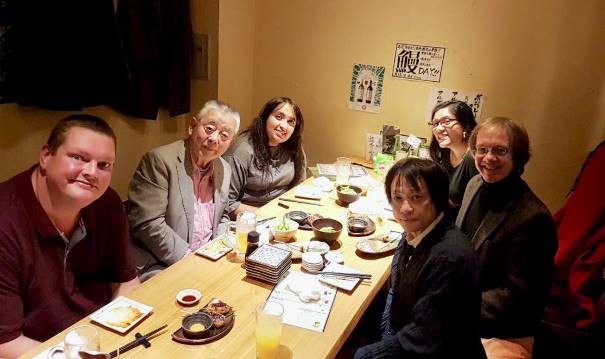

Fukui City, Fukui Prefecture
Thursday 29 November 2018
Creative primary English teaching
This was the third visit of my tour when I was giving a talk at Fukui University of Technology, a small institute beautifully located beside a shrine, so close to one another that I almost took the shrine for the university. Nearly 20 teachers who are mostly expatriates and several Japanese counterparts came to the discussion. Many are very experienced primary and junior high school teachers. This turned out to be an exciting discussion where teachers shared their experiences and concerns for me to make comments and connect their practices with the discourse.
One situation that causes anxiety among many teachers is the fact that the new English curriculum under the 2020 Reform indicates banning games from classroom teaching. From a curriculum point of view, such exclusion of games might stem from on the fact that some English teachers might have overused games for creating classroom enjoyment without proving much learning impact. This especially occurs among some teachers with interest in making students happy during the lesson. However, from a professional point of view, many have been employing and developing game-like activities with a positive learning intent. This group is responding to the rejection of classroom games with frustration. The participants invited me to suggest a way to cope with this.
My recommendation was, first, to refrain from calling their activity ‘a game’ but employ any other terms that might sound more serious, such as memory test (instead of memory game), spelling task (instead of spelling game), and so on. Secondly, it might be helpful to avoid common games that many teachers have already conducted in the classroom quite frequently, such as ‘Bingo’, ‘Simon says’, and so on. Third, try to identify features of games that bring enjoyment to students and incorporate them into new activity design. Some example of such features could be competition, humour, team work, novelty, speed, responsiveness, reward, and so on.
When a classroom task contains these elements, it is likely to create both enjoyment and learning effect. And if that happens, teachers do not need to use ready-made games anymore but can develop creativity and resourcefulness. Perhaps the exclusion of games can provide more opportunities for practitioners to work harder and think more deeply about what they can do to make classroom learning more effective without having to resort to commonly used games. It is through this process that many might be able to develop their own distinctive style and language tasks that maximise learning besides having fun.
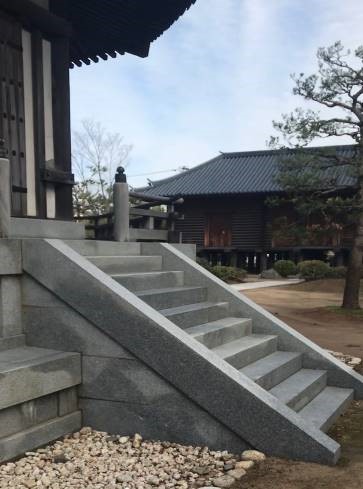
Tottori City, Tottori Prefecture
Friday 28 November 2018
Creative visuals for the English classroom
Totori University was the last stop of my tour where I was invited to talk about creative use of visuals in the classroom. Before the trip, a Japanese colleague, Wakako Takinami, kindly showed me around the city and took me to the impressive sand museum which is a unique cultural feature of the whole prefecture. Following this, my Australian colleague Shirley Leane then introduced me to her colleagues the moment I set foot in campus. These experiences really tuned me into a great mood for the evening workshop at the university. Participants were school teachers who are not all English teachers but do teach English among other school subjects. For the first time during my tour, I see a more desirable balance between Japanese and expatriate teachers in my audience.
It happened that two among the Japanese teachers are professional artists and graphic designers, which created a good understanding as relating to visual art used in the classroom. We had a hands-on session on creating cartoon characters and there was another activity in which participants actually draw image from memory. This is an innovation in implementing information gap because normally in many activity books, information-gap pair work often involves one partner looking at a picture and describing it for the other partner to draw. The weakness of such tasks is that they fail to replicate real-world interaction: if one has a picture in hands, why not show it rather than talk about it? In our activity, each pair has two roles to play: a witness who has seen the suspect and a forensic artist, at the police station, who listens to the witness description from memory and describe that person appearance details. To make this task possible, I show the picture of the suspect on the screen for 10 seconds to the witness while the artist has to close their eyes. This seemed to be the most exciting task of the session as it involves both affect and cognition in the process. Other tasks include an unfinished drawing for participants to complete using their own imagination, a set of different visual elements for everyone to connect them into a coherent story or explanation, an ambiguous picture for participants to guess what has happened before and what is coming text. I also had a chance to share with participants how visuals are connected to poetry when both mediums are employed at the same time to stimulate rich use of senses. I have never seen teachers who are so committed to creating visuals as this group of audience! We posed for a photo here where some are showing off their fun drawings during the session.
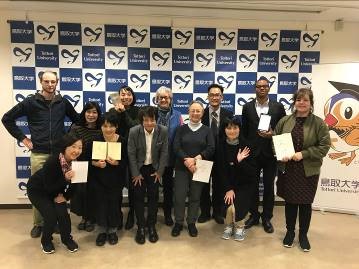
Visiting an English education centre in Odaiba
3 December 2018
I spent my last day in Japan to visit a well-established English language hub located in the fancy-looking building in Odaiba City. The building is known as Tokyo Global Gateway. It was here that I had very mixed feeling about the prospect of English education reform in Japan. On the one hand, I admire the amazing effort invested by many Japanese educators who work closely with native-English-speaking experts to develop the most modern facility aiming at bringing the quality of English education in Japan to the next level.
On the other hand, I could not help witnessing a glaring contrast between the private and public education sectors in this country. While the private sectors seem to enjoy a high degree of education success thanks to high funding, freedom of curriculum innovation, and the enthusiasm of many expat teachers, the public section seems to be struggling with the lack of freedom in curriculum design, low funding, teachers’ heavy workflow, and the lack of English using experience. While the public sector of English education keeps teachers busy with heavy teaching workload and administration duties, the private sector is becoming increasingly diverse, flexible and commercialised. For example, I could see that only children from high-income family could afford to pay ¥2000 per session, a fee which is unthinkable for many parents from public schools in Japan. What I am yearning to see would be some interaction between the two sectors so that rapid achievements from the private sector could transfer valuable pedagogical and logistic assistance to English as a subject in the public system in the country.
Acknowledgement
I would like to express my heartfelt thanks to the C Group, especially to Alan Maley who has recommended me to JALT, to Malu Sciamarelli for her insightful advice on how to make the trip productive, to Jane Spiro for sharing with me great ideas related to her previous Four Corners’ Tour, to LiLT SIG, and Pilgrim who provided financial support, to Yuko Lida for helping me out with Japanese lessons at Monash, to Louise Ohashi who was the JALT Conference Chair who welcome me with great hospitality, and to all my valuable colleagues in Japan, including my friends Yurie, Setsuko, Nobuyuki, Kitajima sensei, and Kanayama sensei whose names I have not included in the report but your presence throughout my stay in Japan was a special energising factor that I could not go without. Without all your support, my trip would not have been possible and filled with profound learning moments.
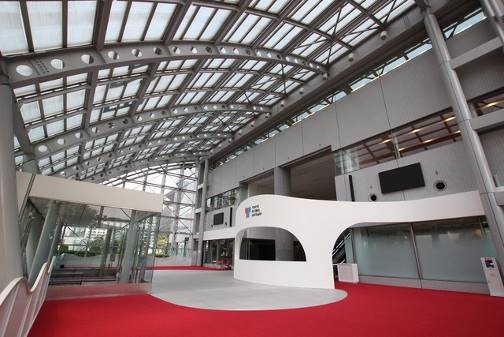
Five Challenges of Planning CLIL Lessons
Leticia Moraes, BrazilReflection on 2018 JALT Conference and the Four Corners Tours in Japan: Kaihimakuhari – Hamamatsu - Fukui – Tottori
Dat Bao, AustraliaSpontaneity – One Day Event: The Empty Space in Teacher Development
The C Group YouTube Channel
Malu Sciamarelli, Brazil